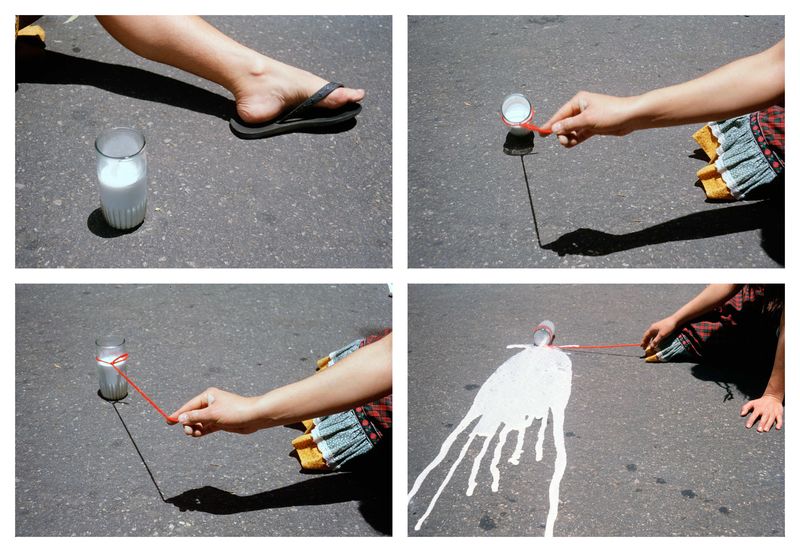
Cecilia Vicuña, Artist
Vaso de leche, Bogotá (Glass of milk, Bogotá)
, 1979
In the 1960s and 1970s Cecilia Vicuña wrote erotic poems and created artworks. She was a founder of Tribu No, an avant-garde group that staged performances and published manifestos during the 1960s in Santiago. On September 11, 1973, when the military coup took place in Chile, she was in London, where she stayed and co-founded Artists for Democracy, a group of artist activists who opposed the dictatorship. In Bogotá in 1979 she created the work Vaso de leche (Glass of milk) at the invitation of CADA from Chile. The action revolved around milk as a reference to both a policy under the socialist administration of Salvador Allende of distributing half a liter of milk per day to every child and an incident in Colombia in which an estimated 1,920 children died, poisoned when a private company added water and paint to milk. The work consisted of the simple act of spilling a glass of white paint with red yarn tied around it in front of Simón Bolívar's residence in Bogotá.
En los años 60 y 70s Cecilia Vicuña escribió poemas eróticos y realizó obras de arte. Fue fundadora de Tribu No, un grupo de vanguardia que realizó performances y publicó manifiestos durante los años 60 en la ciudad de Santiago de Chile. El 11 de septiembre de 1973, cuando se produce el golpe militar en Chile, ella se encontraba en Londres, donde se quedó y co-fundó Artists for Democracy (Artistas por la democracia), un grupo de artistas activistas que se opusieron a la dictadura. En 1979, en la ciudad de Bogotá, creó la obra Vaso de leche, a partir de una invitación del grupo CADA de Chile. La acción giraba en torno al vaso de leche como una referencia a la política seguida durante la administración de Salvador Allende, cuando a cada niño se distribuía medio litro de leche por día, y a un incidente ocurrido en Colombia que provocó que 1920 niños muriesen envenenados cuando una compañía privada añadió agua y pintura a la leche. La obra consiste en el simple acto de derramar un vaso con pintura blanca con un hilo rojo atado a su alrededor ante la residencia de Simón Bolívar en Bogotá.


